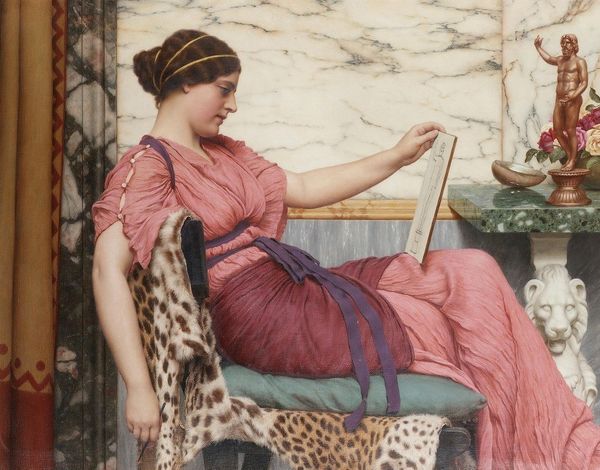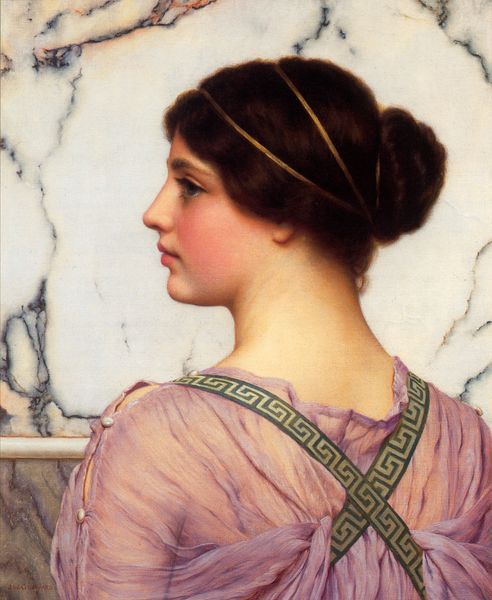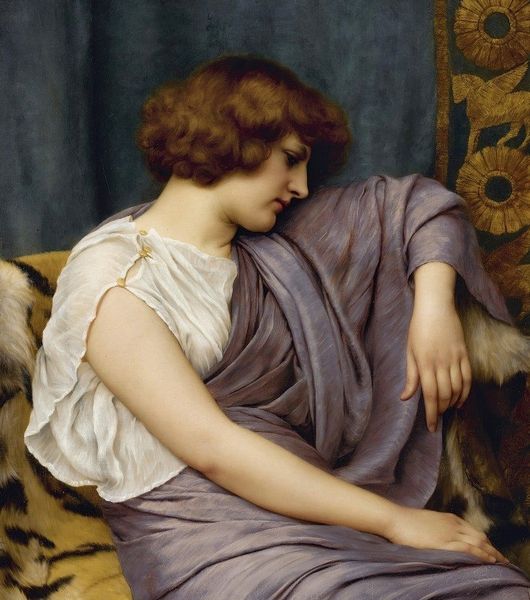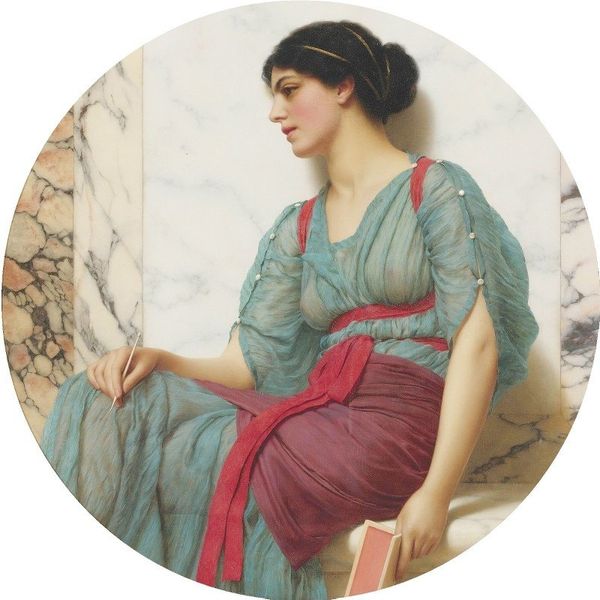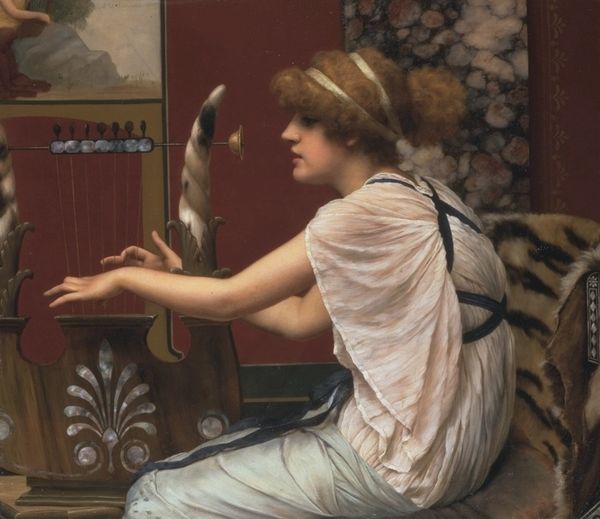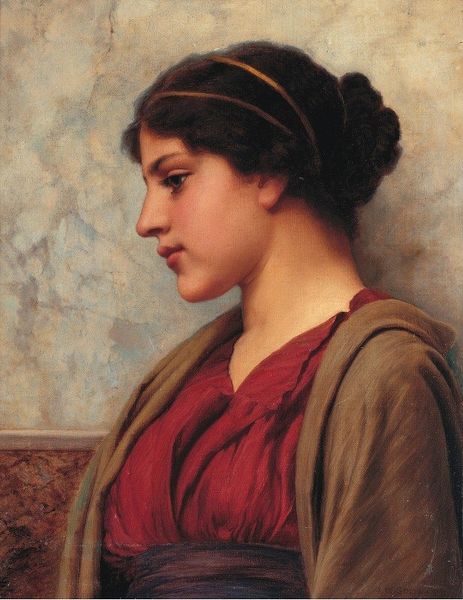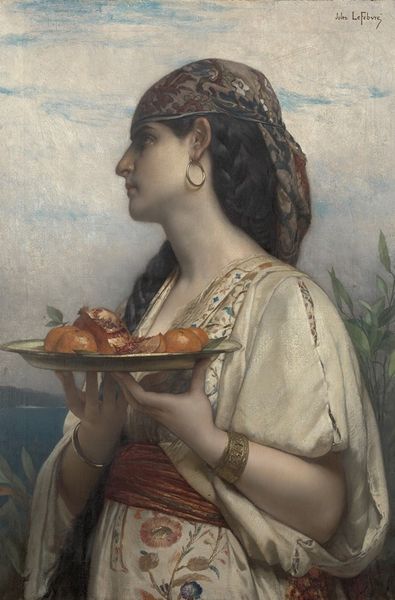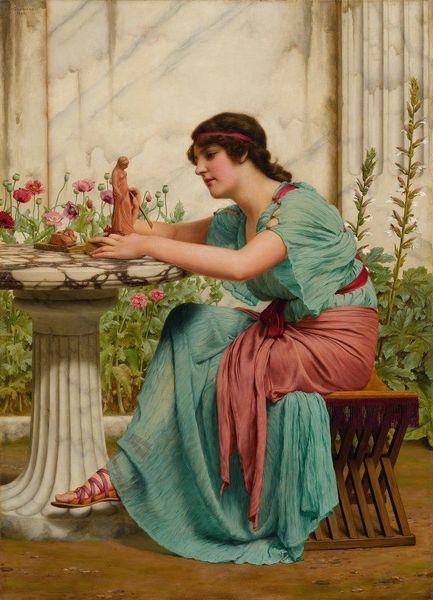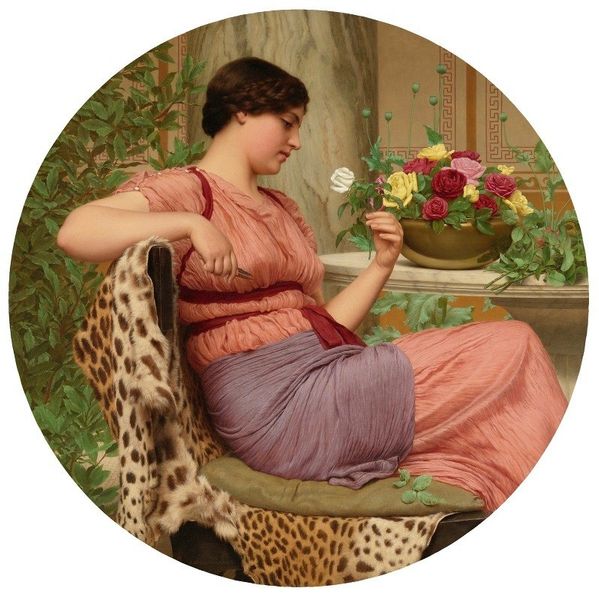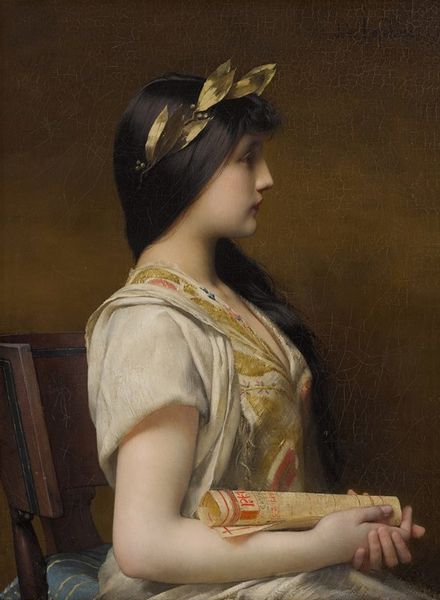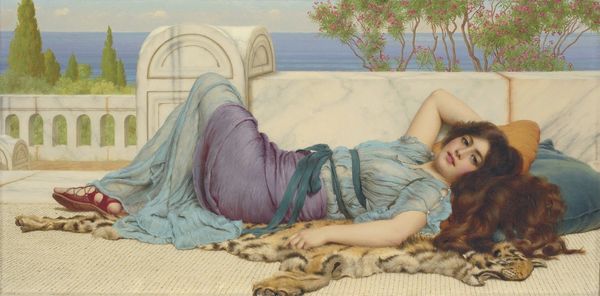
Copyright: Public Domain: Artvee
Curator: I see languor, the very air around her seems heavy with it. And cherries, a bowl full. Editor: Yes, this is "Ismenia," a 1908 oil painting by John William Godward, steeped in the aesthetic of classicism that defined much of his work. Godward's pre-Raphaelite leanings shine here too. Notice how she gazes downward? Curator: As if she can't even summon the energy to eat the fruit. The cherries could be symbols—pleasures or burdens, ripe with implication. The fur piece also adds a tactile sensation—decadent, luxurious. Is that marble behind her? The textures alone make the work interesting. Editor: Absolutely, Godward loved setting his figures against marble backdrops; it provides a timeless elegance, rooted in antiquity, to which his heroines belonged, if only by his, the artist's, hand. Let's examine further how that sheer purple fabric draped around her almost seems painted *onto* her skin; consider the skill required to produce such an illusion of depth in texture on a canvas. Curator: Purple's a historically charged colour, linking back to royalty, and luxury items; which adds another subtle, symbolic layer, don't you think? Like she's swathed not just in fabric but an inherited privilege. All those shades—purple of the blouse against gold skirt are evocative. Editor: Without a doubt, and that little detail of her gaze: downwards. Godward often painted women in pensive moments, their gaze averted from ours. Is it innocence or a hidden power? Curator: Perhaps it's both; and therein lies the eternal mystery which holds us captive. Her beauty may lull the viewer. This woman occupies an ethereal space that feels untouchable, timeless. Almost goddess-like but not unhuman; she possesses just that much reality needed to pull the viewer in, a reflection of one’s desires perhaps? Editor: An inviting mystery indeed, a question to dwell upon even after we've moved on from this room, don't you agree?
Comments
No comments
Be the first to comment and join the conversation on the ultimate creative platform.
